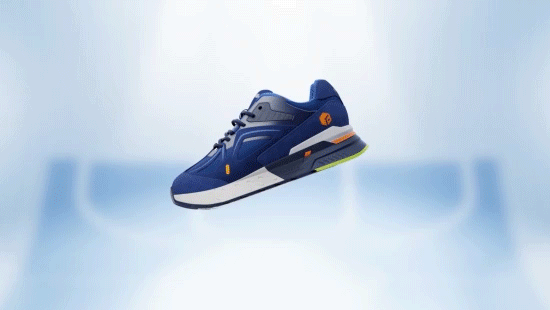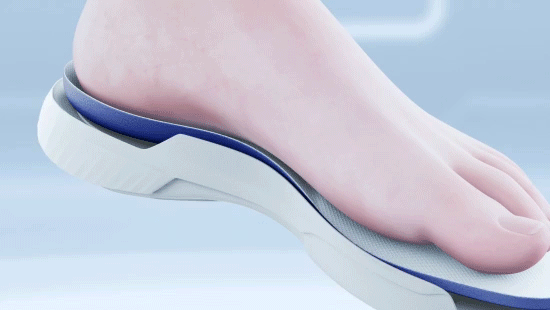If you've ever experienced pain in your heel or the bottom of your foot, you may be suffering from a condition known as Plantar Fasciitis. This is a common condition that affects people of all ages and lifestyles.
What is Plantar Fasciitis?
Plantar Fasciitis is a condition that occurs when the plantar fascia, a thick band of tissue that runs along the bottom of your foot, becomes inflamed. The plantar fascia is responsible for supporting the arch of your foot and absorbing shock when you walk or run. When this tissue becomes damaged or inflamed, it can cause pain and discomfort in your heel or the arch of your foot.
Most common causes and risks and factors
The most common causes of Plantar Fasciitis is overuse or repetitive strain on the plantar fascia. This can happen if you spend a lot of time on your feet, especially if you're walking or running on hard surfaces. Other risk factors include obesity, age, flat feet and certain medical conditions such as diabetes or arthritis.
Symptoms and Diagnosis
You should suspect Plantar Fasciitis if you experience the following:
- Pain in the heel or arch of your foot, especially in the morning or after periods of rest.
- Pain that improves with activity but worsens with prolonged standing or walking.
- Tenderness or sensitivity when you press on the bottom of your foot near the heel.
- Stiffness or limited range of motion in your foot or ankle.
Your doctor can diagnose Plantar Fasciitis by performing a physical exam and asking about your symptoms. In some cases, an X-ray or MRI may be necessary to rule out other conditions.
Treatment
The good news is that Plantar Fasciitis is usually treatable with conservative measures. These may include rest, ice, stretching exercises, and over-the-counter pain medications such as ibuprofen. Your doctor may also recommend custom orthotics or physical therapy to help support your foot and reduce inflammation. In rare cases, surgery may be necessary to repair or remove damaged tissue.
Exercises and Stretches
Stretching exercises can be an effective way to prevent and treat Plantar Fasciitis. Some simple stretches you can try include rolling a tennis ball under your foot, stretching your calf muscles, and using a towel to stretch your plantar fascia. Your doctor or physical therapist can recommend specific exercises that are right for you.
Prevention
The best way to prevent Plantar Fasciitis is to take care of your feet. This includes wearing comfortable shoes with good arch support, maintaining a healthy weight, and avoiding activities that put excessive strain on your feet. If you do experience foot pain or discomfort, it's important to seek medical attention right away to prevent further damage.
Anatomy of a Plantar Fasciitis Shoe
When combating plantar fasciitis, seek shoes with arch support, heel cushioning, and a supportive sole that's both firm and flexible. Opt for a moderate heel height and a roomy toe box for natural toe movement. Ensure orthotic compatibility and select activity-specific footwear for personalized relief.
![Arch Support & Heel Cushioning]()
Arch support and heel cushioning are crucial features in shoes for plantar fasciitis. Arch support helps distribute pressure and reduce strain on the plantar fascia, while heel cushioning absorbs shock and minimizes impact on the heel. These features work together to provide comfort and alleviate pain.
![Arch Support & Heel Cushioning]()
The sole of the shoe should strike a balance between firmness and flexibility. A supportive sole offers stability and prevents overpronation, which can contribute to plantar fasciitis. Flexibility allows for natural foot movement, contributing to overall comfort.
![Arch Support & Heel Cushioning]()
A roomy toe box provides ample space for your toes to move naturally. It prevents crowding and pressure on the toes, which can aggravate plantar fasciitis and other foot issues. A wider toe box allows the toes to spread out comfortably during each step.
Why Fitville?
● Comfort+™ Technology
FitVille Comfort+™ technology puts comfort in motion. This advance technology follows the contour of your feet to enhance your movement. With Comfort+™, EVA materials transform into our dual density solid soles.The state change from just EVA material into a dual density sole is like a caterpillar turning into a butterfly. It’s not only magic, but also scientifically proven. Our extra cushioning shoes delivers a greater extent of comfort-in-motion.
● PropelCore™ Technology
FitVille’s PropelCore™ technology turns selected materials into a ergonomic design. Our patented PropelCore™ technology is a dynamic totality of the five core components: dual density sole, anti-skid rubber, heel ring, removable insoles, shock absorbing pad. PropelCore™ is our secret weapon in creating the most supportive shoes. Your footwear experience empowered by PropelCore™ would be surprisingly steady.
● ErgoFit™ Technology
Empowered by ErgoFit™ technology, FitVille shoes are of ergonomic designs that give you the amazing footwear experience. Springy cushioning minimizes impact and maximizes stability. You’ll feel no pain when you move in FitVille shoes. Anatomical arch support makes your ankles more stable, keeps your feet in the proper position and shape to be fully functional. The wide toe box allows your feet to move comfortably. We are proud to serve you the well-crafted healing shoes supported by ErgoFit ™ technology.











































